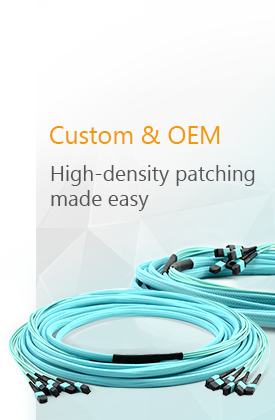In the realm of telecommunication networks, Fiber Optic Adapters stand as pivotal components, facilitating seamless connections between different types of optical fibers. A Fiber Optic Adapter, also known as a fiber optic coupler or fiber optic connector adapter, plays a vital role in ensuring the compatibility and efficiency of optical fiber connections within network infrastructures.
Fiber Optic Adapters are designed to provide a simple and reliable means of connecting two optical fibers with different connectors or interfaces. These adapters come in various types, including single-mode and multi-mode variants, as well as different connector configurations such as SC, LC, ST, and MPO. The key feature of fiber optic adapters lies in their ability to ensure precise alignment and connection between optical fibers, thereby minimizing signal loss and maximizing transmission efficiency.
Moreover, fiber optic adapters are characterized by their compact and robust design, which allows for easy installation and removal in network equipment, patch panels, and fiber optic enclosures. These adapters are typically constructed from high-quality materials such as ceramic or metal, ensuring durability and long-term performance in demanding environments.
The applications of fiber optic adapters are diverse and extensive, catering to the needs of various industries and sectors. In telecommunications networks, these adapters are used to interconnect different types of optical fibers, enabling seamless connectivity between network components such as switches, routers, and optical transceivers. By facilitating interoperability between different connector types, fiber optic adapters help organizations optimize their network infrastructures and ensure compatibility across various equipment vendors.
Furthermore, fiber optic adapters find applications in data center environments, where they play a crucial role in connecting servers, storage devices, and networking equipment. These adapters enable the efficient deployment of fiber optic links within data centers, supporting high-speed data transmission and ensuring reliable connectivity for mission-critical applications.
Additionally, fiber optic adapters are utilized in enterprise networking installations, providing a flexible and scalable solution for connecting fiber optic cables within LANs, WANs, and campus networks. Whether used for horizontal cabling, vertical cabling, or inter-building links, these adapters help organizations enhance their network performance and meet the growing demands of digital communication.
In conclusion, fiber optic adapters are indispensable components in telecommunication networks, data centers, and enterprise environments, facilitating seamless and efficient connectivity between optical fibers. With their precision alignment, robust construction, and versatile applications, fiber optic adapters empower organizations to build resilient and high-performance network infrastructures that can meet the demands of modern communication.
In summary, fiber optic adapters are essential components for ensuring seamless connectivity between optical fibers in telecommunication networks and data centers. With their precision alignment and robust construction, fiber optic adapters enable organizations to build resilient and high-performance network infrastructures. As technology advances, fiber optic adapters will continue to play a crucial role in shaping the future of optical communication.


